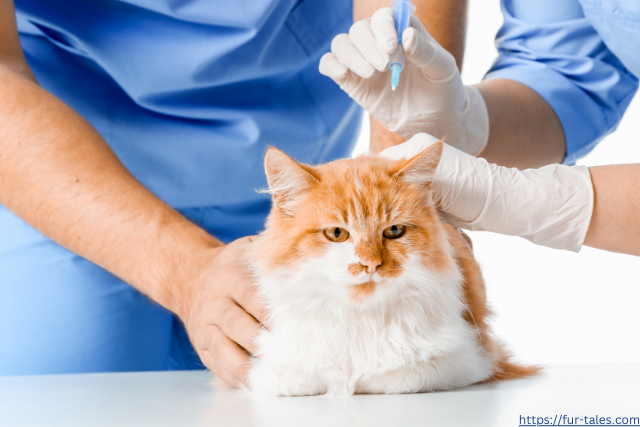
By Fur-Tales Team
Vaccination Schedule for Pets: What You Need to Know in 2025
Keeping your pet healthy involves more than just good food and playtime—it also includes protecting them from dangerous diseases through timely vaccinations. Whether you’re a new pet parent or just want to stay up-to-date, understanding the 2025 pet vaccination schedule is key to safeguarding your furry friend’s long-term well-being.
In this guide, we break down the latest vaccination recommendations for both dogs and cats, including core and non-core vaccines, updated veterinary insights, and tips to make sure your pet stays protected.
Vaccination Schedule for Dogs in 2025
Core Vaccines (Essential for All Dogs)
| Vaccine | First Dose | Boosters | Notes |
|---|---|---|---|
| Rabies | 12–16 weeks | 1 year later, then every 1–3 years depending on local law | Legally required in most areas |
| DHPP (Distemper, Hepatitis, Parvovirus, Parainfluenza) | 6–8 weeks | Every 3–4 weeks until 16 weeks, then 1 year later, then every 3 years | Combination vaccine |
| Leptospirosis | 12 weeks | Booster 3–4 weeks later, then annually | Recommended in high-risk areas |
Non-Core Vaccines (Based on Lifestyle and Location)
| Vaccine | When to Consider It | Booster |
|---|---|---|
| Bordetella (Kennel Cough) | Dogs in kennels, daycares, or grooming | Every 6–12 months |
| Canine Influenza (CIV) | Dogs in high-exposure areas | Initial 2 doses, then annually |
| Lyme Disease | If ticks are common in your area | Booster 2–4 weeks later, then annually |
Vaccination Schedule for Cats in 2025
Core Vaccines (Essential for All Cats)
| Vaccine | First Dose | Boosters | Notes |
|---|---|---|---|
| Rabies | 12–16 weeks | 1 year later, then every 1–3 years | Required by law in many areas |
| FVRCP (Feline Viral Rhinotracheitis, Calicivirus, Panleukopenia) | 6–8 weeks | Every 3–4 weeks until 16 weeks, then 1 year later, then every 3 years | Combination vaccine |
Non-Core Vaccines (Based on Risk)
| Vaccine | When to Consider It | Booster |
|---|---|---|
| FeLV (Feline Leukemia Virus) | Recommended for kittens, outdoor cats, or multiple-cat households | Initial 2 doses, then annually if still at risk |
| Chlamydia felis | For cats in multi-cat environments with respiratory issues | Booster 3–4 weeks later, then annually if needed |
What’s New in 2025?
- Longer-lasting vaccines: Many newer vaccines now offer protection for up to 3 years.
- Lifestyle-based protocols: Vets are shifting toward customized schedules based on your pet’s age, health, breed, and exposure risk.
- Titer testing: Blood tests that check immunity levels are increasingly used to determine if a booster is necessary—reducing over-vaccination concerns.
Talk to Your Veterinarian
Every pet is unique. Your veterinarian will assess:
- Age: Puppies and kittens need more frequent shots.
- Medical history: Chronic illnesses may affect vaccine choices.
- Lifestyle: Outdoor access, travel, or contact with other animals changes what’s needed.
Ask your vet about:
- Using combination vaccines to reduce shots
- Possible side effects (mild fatigue, swelling at injection site)
- Titer testing options
Tips to Stay on Track with Vaccines
- Set reminders for annual vet visits
- Use a pet health app to track vaccine records
- Request a printed vaccination certificate for travel, boarding, or daycare
- Keep a digital scan/photo of your pet’s vaccine log on your phone
Image Source: Canva
